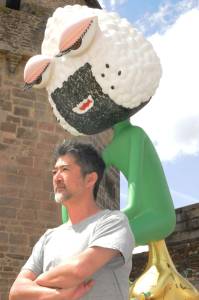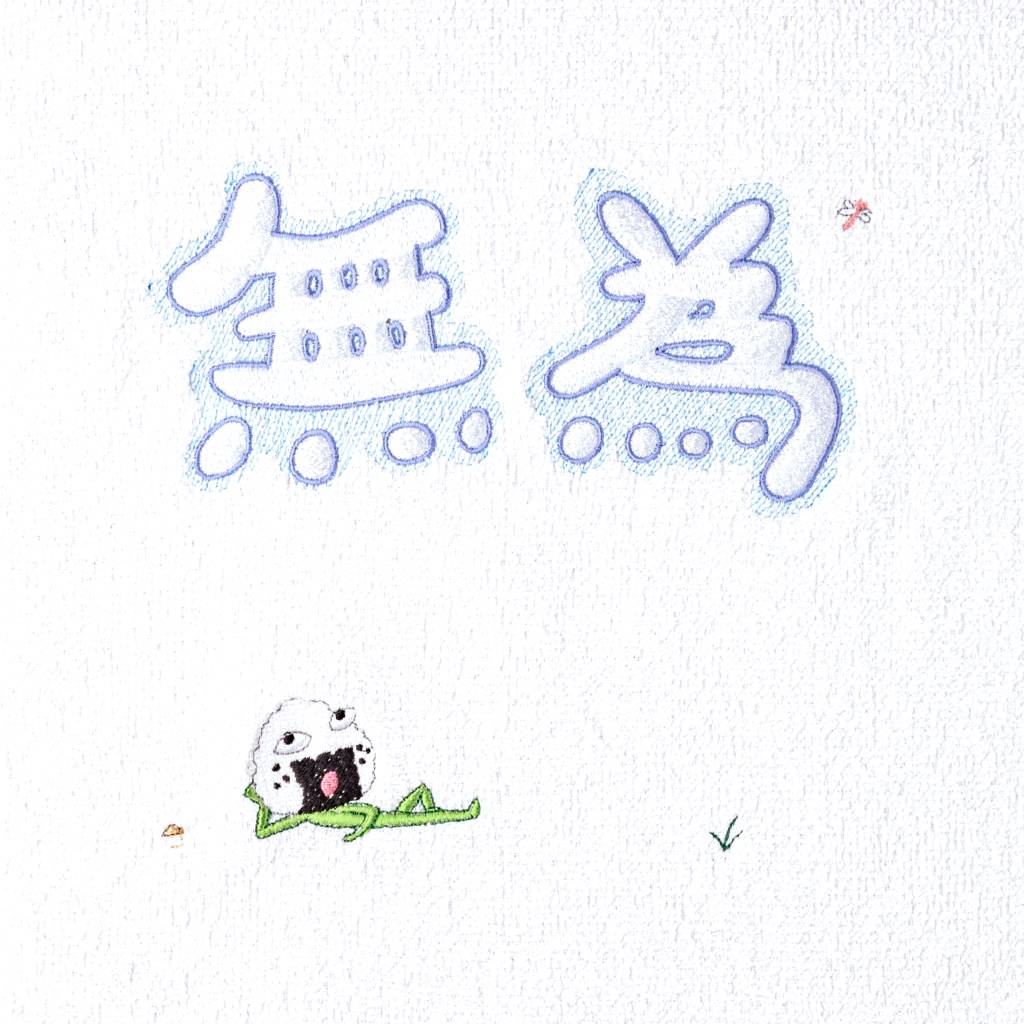This “Onigiri Kamen (riceball-mask man)” is a character I created in 2001 as my ideal alter ego. He has appeared in several of my own works, the most famous being The Non-thinker which was shown in my solo exhibition at Mori Art Museum in 2012. The word mui is often used today to mean simply “lazy,” but it originally meant something like “a state of nature” in contrast to “human-made,” and even has an amazing origin in the Buddhist term eienzettai no shinri (eternal and absolute truth) which derives from yui (promising, capable, or perpetual change), the opposite term for yui. I had always secretly thought the word was appropriate for the Onigiri Kamen character, including the gap between the two, but this is the first time I have showed it to the public.
Makoto Aida
Recommended artist
Born in 1965 in Niigata Prefecture. Graduated from Graduate School of Fine Arts at the Tokyo University of the Arts in 1991. Adopting themes such as pretty girls, war scenes, and businessmen, Aida’s works depict social phenomena and historical events, effortlessly blending elements from the present and the past, and from the West and East. The bizarre contrasts and sharp criticism that define his works have won strong fans of all ages. His recent publications include the novel Geisai (Bungeishunju, 2020) and the essay collection Sei to Geijutsu (Gentosha, 2022). Recent major solo exhibitions in Japan include “Monument for Nothing,” Mori Art Museum (2012-13) and “GROUND NO PLAN,” Aoyama Crystal Building (2018).
Makoto Aida
Recommended artist

Courtesy of Mizuma Art Gallery
Born in 1965 in Niigata Prefecture. Graduated from Graduate School of Fine Arts at the Tokyo University of the Arts in 1991. Adopting themes such as pretty girls, war scenes, and businessmen, Aida’s works depict social phenomena and historical events, effortlessly blending elements from the present and the past, and from the West and East. The bizarre contrasts and sharp criticism that define his works have won strong fans of all ages. His recent publications include the novel Geisai (Bungeishunju, 2020) and the essay collection Sei to Geijutsu (Gentosha, 2022). Recent major solo exhibitions in Japan include “Monument for Nothing,” Mori Art Museum (2012-13) and “GROUND NO PLAN,” Aoyama Crystal Building (2018).



